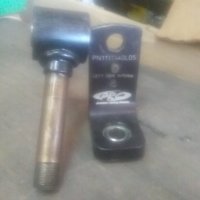flattop1
Dawg 89
It would not be an accurate representaion with out the kingpin angle .I can easily do that, but I'm wondering, what it is that you're thinking? The arc itself will never change, regardless of how much castor is put into the spindle! If I take the kingpin inclination out, and only use castor, that arc goes away.
When you turn right the spindle tip goes down relative to the ground and rises up when you turn left .
Maybe a 2d drawing won't show that .







